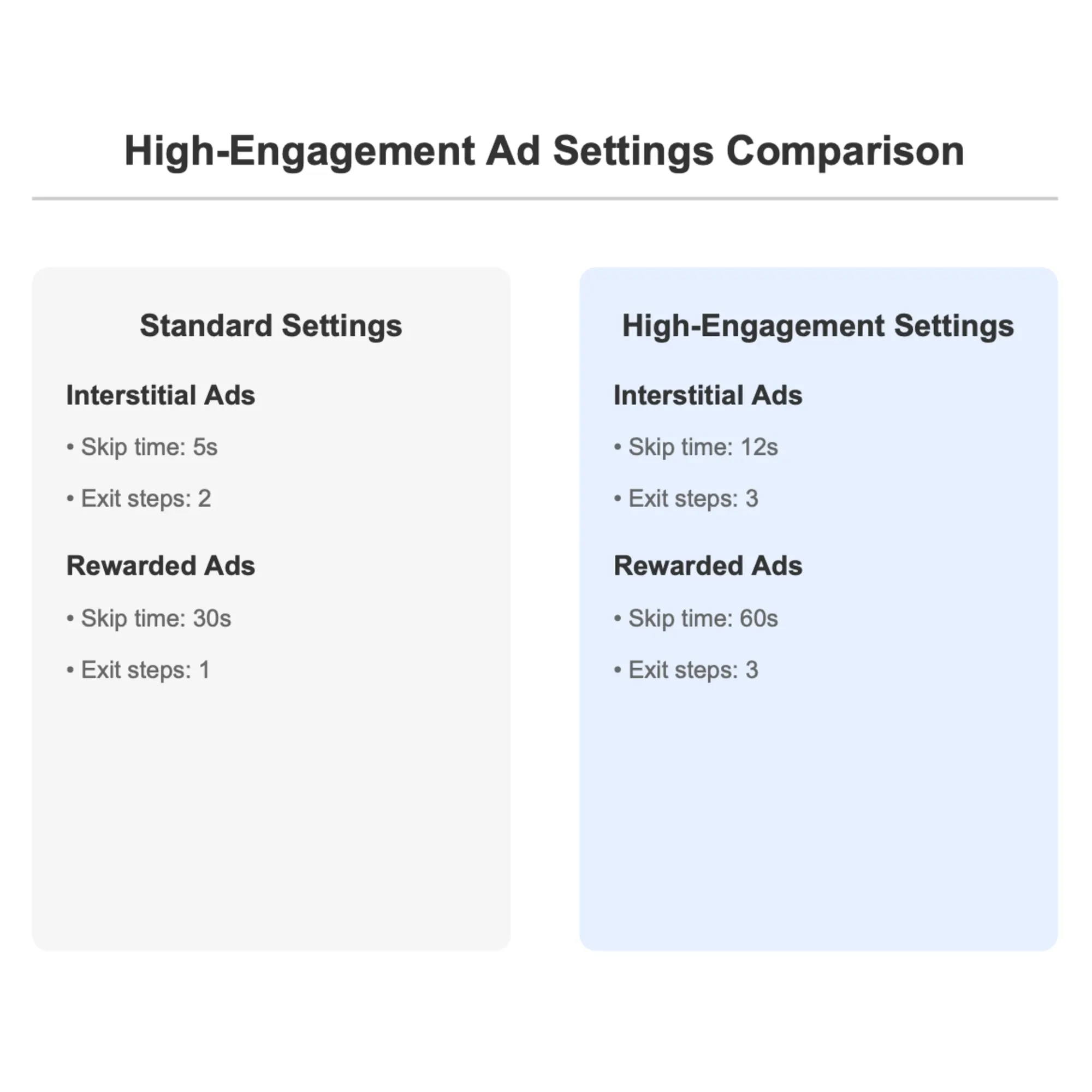Google AdMob enhances ad controls with new high-engagement settings
Advertisers gain expanded control over interstitial and rewarded ad formats through app-level monetization tools.

In a significant update announced today, February 12, 2025, Google AdMob introduced new high-engagement ad settings, providing app developers with enhanced control over their advertising strategies. The update focuses specifically on interstitial and rewarded ad formats, marking a shift in how developers can manage user engagement.
According to the official announcement, the new app-level setting implements specific parameters for ad display durations and interaction requirements. Technical specifications indicate that interstitial ads can now be configured with skip times of up to 12 seconds, while rewarded ads extend to a maximum of 60 seconds before granting rewards.
The implementation introduces a three-step exit mechanism for both interstitial and rewarded formats, increasing from the previous limitation of one to two steps. This modification represents a substantial change in user interaction patterns with mobile advertisements.
Data from the technical documentation reveals a detailed comparison between disabled and enabled high-engagement settings. When disabled, rewarded ads maintain a 30-second maximum duration with a single-step exit process. In contrast, enabled settings extend this to 60 seconds with up to three exit steps.
Interstitial advertisements demonstrate similar technical variations. Display ads maintain a consistent five-second skip time regardless of setting status. However, video advertisements show marked differences: disabled settings limit skip times to five seconds, while enabled settings extend this to 12 seconds.
The documentation specifies that these modifications apply exclusively to interstitial and rewarded ad units. Banner and native advertisements remain unaffected by the new parameters, maintaining their existing functionality within the AdMob network.
Implementation procedures require specific technical steps through the AdMob platform. Developers must access their account at admob.google.com, navigate through the apps section, and modify individual application settings. The system architecture automatically enables these features by default across all applications.
Security considerations include compliance requirements for child-directed applications. According to the announcement, applications classified under Google Play's Families policy receive automatic adjustments to ensure adherence to regulatory standards.
The technical framework allows for buyer innovation within specified parameters. The system architecture supports various ad formats while maintaining defined boundaries for user interaction. This standardization aims to create consistent experiences across different applications within the AdMob network.
Performance metrics focus on user engagement patterns and overall ad effectiveness. The system monitors skip rates, completion times, and interaction patterns to evaluate advertisement performance within the new parameters.
Integration requirements remain straightforward, with no additional code implementation necessary for existing AdMob users. The platform handles adjustments through backend configurations, maintaining compatibility with current application builds.
Monitoring capabilities allow developers to track performance metrics through the AdMob dashboard. The system provides data on user interaction patterns, completion rates, and engagement levels across different ad formats.
The technical documentation emphasizes that partner bidding ad units operate independently of these new parameters, maintaining their existing functionality without modification. This separation ensures continued operation of established advertising partnerships without disruption.
Control mechanisms extend to individual applications, allowing developers to enable or disable features selectively across their portfolio. This granular control enables testing and optimization based on specific application requirements and user behavior patterns.
The implementation timeline indicates immediate availability of these features across the AdMob network. Developers can access and modify these settings through their administrative dashboard, with changes taking effect upon confirmation.
Documentation indicates that these modifications represent part of ongoing system optimizations. The technical framework supports future adjustments while maintaining backward compatibility with existing implementations.
The announcement emphasizes the importance of maintaining transparent user experiences. Technical specifications ensure that users receive clear information about advertisement duration and reward conditions, maintaining consistency across different applications.
This technical update reflects evolving patterns in mobile advertising technology, introducing standardized parameters for user interaction while maintaining developer control over implementation details.

